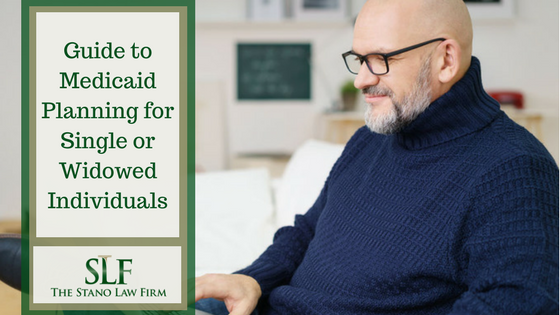Medicaid is a vital benefit for millions of people all over the United States, especially when you’re in dire need of medical expenses to cover home health care, assisted living services, nursing home stays or other expenses. Simply assuming this coverage will be there, however, can be a mistake. As with any government program, you need to plan and take the right steps to ensure you’ve got the coverage you need.
What steps are important to take? Who is eligible for Medicaid, and how do you go about getting the full benefits to which you’re entitled? Explore a complete guide to Medicaid planning for single and widowed individuals, so you can be sure you have the health care coverage you need.
Guide to Medicaid Planning
Any guide to Medicaid planning has to address the fact that the application process can be time-consuming and complicated. That’s why it’s important to start planning early. You want to protect your assets while still being able to get your coverage. Unfortunately, there’s a high possibility of rejection when you apply for Medicaid, especially if you’re unfamiliar with how it all works.
Medicare Exemptions
The first thing to understand before you apply for Medicaid is what exemptions apply. Single people can keep $2,000 in assets in their own name, including the cash value of life insurance policies, investment accounts, savings bonds, timeshare ownerships, individual retirement funds, and business interests. In addition, the single applicant can keep a single car in their name. Finally, if you have a legitimate intent to return home someday, your house becomes exempt.
The house exemption is tricky, because many Medicaid recipients wish to return home. The government, however, will look at the real potential for this before exempting the house. All too often, homes are sold to cover medical costs, unless they’re otherwise protected, such as in a trust.
Making Your Plan of Action
This may seem like a long time, but a solid plan of action for Medicaid is a good five years. This is how far back the plan will look in terms of your assets. This is vital, not just so you can have something to pass on to loved ones, but so that you have assets available to pay for those things that Medicaid does not, including long-term care and other major medical costs.
Protecting Your Assets
The first thing you should do when planning for Medicaid is to speak with a qualified Medicaid attorney. A Medicaid attorney can help to protect your assets in many ways. An asset protection trust, for example, can protect them from Medicaid, since the assets you place within, though they can be accessed by you, don’t legally belong to you but rather legally belong to the trust.
Other options to protect assets include private annuities, promissory notes, caregiver agreements with loved ones, and a range of other options. Each of these has its own requirements and steps to set up. If you are looking to start your Medicaid planning and you need more information in the Cuyahoga County area, contact the Stano Law Firm for help today.








Leave A Comment